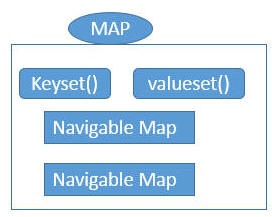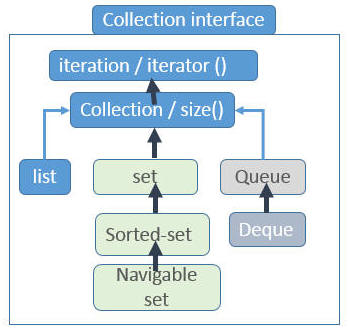In C++ STL ("Standard Template Library ") offers a set of container constructs, to hold composite data. These constructs are Container, Iterators, Function Objects (functors), and algorithms.
- Container : stores construct able and assignable objects
- Sequence:
- LIST : adds data as First Come Last To Go, at the bottom of storage pile. May contain duplicate data. Must be instantiated prior to use.
List list1 = new ArrayList();
List list2 = new LinkedList();
List list3 = new Vector();
List list4= new Stack();- Queue : FIFO add elements at the last Similar to List with additional operation like insertion, removal, and inspection.

- Interface Collection is the root interface
- List, Set and Queue derive from collection
- Set is a collection, does not contain duplicates
- Queue : waiting data, inserted at the last and deleted from the top (First come last to go)
- List is an ordered sequences, can contain duplicate values.
List index is zero based.
- Class ArrayList and Vector are dynamic and resizable
arrays.
- Vectors are synchronized, executes slower that ArrayList as it uses an overhead of thread synchronization.
- ArrayList are not synchronized, executes faster than vector
- LinkedList can be used to create stacks, queues and deques (double ended queues)
- Class ArrayList and Vector are dynamic and resizable
arrays.
- MAP : A collection that provides handle to "valuset" with a "keyset".
